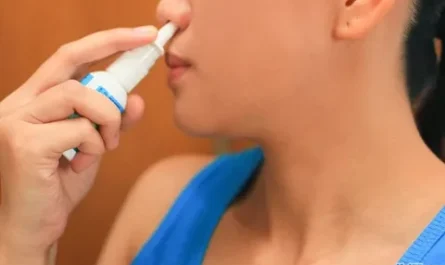Causes of Dysphagia
Difficulty swallowing or dysphagia can be caused due to various reasons. Some of the major causes of dysphagia include:
Structural Abnormalities
Damage or abnormalities of the oral cavity, pharynx or esophagus like head and neck cancer, laryngectomy, esophageal atresia or tracheoesophageal fistula can mechanically interfere with the swallowing process.
Neurological Conditions
Conditions affecting the brain and nerves like stroke, Parkinson’s disease, amyotrophic lateral sclerosis (ALS), multiple sclerosis, Alzheimer’s disease, etc. can damage the nerve pathways involved in swallowing. This disrupts the coordination between breathing and swallowing leading to Dysphagia Management.
Infections and Inflammations
Acute and chronic infections or inflammations of the throat, tonsils, adenoids, sinuses or lungs can cause swelling and pain affecting swallowing. Conditions like pharyngitis, tonsillitis, bronchitis, pneumonia are common causes.
Motor Neuron Diseases
Diseases affecting the motor neurons in the brainstem and spinal cord like ALS, progressive bulbar palsy can lead to weakening of swallowing muscles over time.
Evaluation of Dysphagia Management
A thorough clinical swallowing evaluation is important to understand the nature and severity of dysphagia. This includes:
Medical History: Details of presenting symptoms, medical comorbidities, medications, surgeries are noted.
Physical Exam: Throat, neck and breathing examinations are done to check for structural abnormalities.
Flexible Endoscopic Evaluation of Swallowing (FEES): A long flexible tube with a camera is passed through the nose to directly visualize the swallowing process and assess risks of aspiration.
Videofluoroscopic Swallowing Study (Modified Barium Swallow): X-rays are used to capture real-time images of swallowing barium-coated material to detect problems.
Manometry: Pressure sensors are used to measure muscle activity and contractions during swallowing.
pH or Impedance Monitoring: Tests for acid and Bolus entry into the esophagus and lungs respectively to detect silent aspiration.
These tests help determine the severity and mechanisms of dysphagia to guide appropriate management.
Dietary and Behavioral Modifications For Dysphagia Management
Based on the evaluation findings, certain dietary modifications and behavioral changes are recommended initially:
Thickening agents may be added to liquids to make them easier to swallow safely. Options include nectar-thick and honey-thick consistencies.
Small, frequent sips with pauses in between aid coordination and reduce risks of aspiration if swallowing liquids is difficult.
Food should be cut into bite-sized pieces which are chewed well before swallowing to form a cohesive and easy to swallow bolus.
Patients should sit upright for at least 30 minutes after meals to prevent reflux of food into the lungs.
Chin-down posture while swallowing may redirect the food down the esophagus instead of airways.
Proper oral hygiene and dental care also reduce risks of pneumonia from accumulated secretions.
These non-invasive measures form the first-line management for mild to moderate Dysphagia Management cases. Compliance is important for best results.
Therapeutic Exercises
For some patients, swallowing therapy or exercises under the guidance of a speech-language pathologist may help improve muscle strength and coordination. Examples include:
Mendelsohn maneuver – Chin tuck with simultaneous swallowing.
Supraglottic swallow – Swallowing with throat muscle effort.
Effortful swallow – Consciously applying more pressure while swallowing.
Thermal-tactile stimulation – Swallowing food/liquids at varying temperatures or with additives.
Shaker exercise – Head shaking to facilitate laryngeal elevation.
These exercises target specific problem areas and are continued long-term to reinforce safe swallowing techniques. Neurorehabilitation may also aid recovery in some neurological conditions.
Enteral Nutrition Support
For patients with severe, long-term dysphagia placing a feeding tube may be necessary to prevent malnutrition. Tube feeding options include:
Nasogastric tubes – Passed through nose, stomach; used short-term usually. At risk for pulling out.
Percutaneous Endoscopic Gastrostomy (PEG) tubes – Surgically placed long-term tubes directly into stomach avoiding the nose and mouth.
Jejunostomy tubes – Place the tube further into the small intestine bypassing the whole stomach in some cases.
These ensure adequate caloric and nutritional supplementation is provided to the body when oral intake is insufficient or risky. Care is taken to continue swallowing therapies alongside.
Decision Making for Surgeries For Dysphagia Management
For a select group, surgeries may help resolve structural or functional issues causing dysphagia:
Botulinum toxin injection – Botox paralysis of tight upper esophageal muscles in achalasia.
Myotomy – Cutting open tight muscle ring in achalasia.
Reflux surgeries like Nissen fundoplication – Treats acid reflux that can exacerbate dysphagia.
Voice prosthesis placement – Channel in laryngectomy patients bypassing vocal cords during swallowing and speech.
Cricopharyngeal myotomy – Cutting tight cricopharyngeus muscle outlet in neurogenic dysphagia.
Post-surgery patients require careful swallowing therapy with modified diets to regain safe oral intake. Multidisciplinary coordinating between surgeons, therapists is key.
Dysphagia management discussed the major causes, evaluation techniques, medical, behavioral, exercise-based treatments, nutritional management options and surgical procedures utilized in the comprehensive management of patients with swallowing disorders. A tailored multimodal approach is usually necessary for best outcomes depending on individual etiology and functional impairments.
*Note:
1. Source: Coherent Market Insights, Public sources, Desk research
2. We have leveraged AI tools to mine information and compile it


